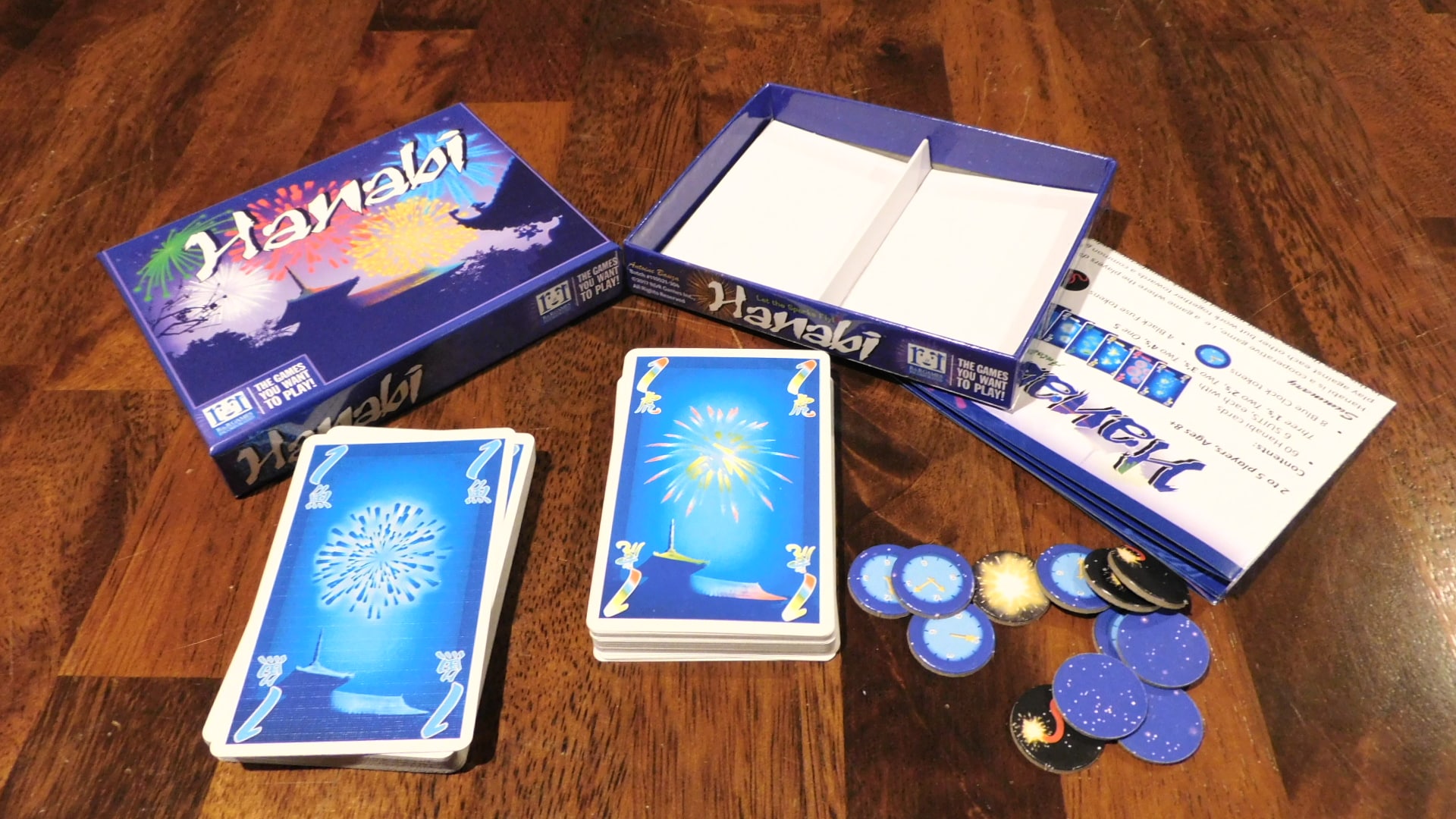Hey, are you in need of a how to play for Hanabi? Well, then you’re in luck, because there’s one right here!
Hanabi is a cooperative game in which players can’t see their own cards. Players are trying to make five different colored stacks of cards going from one to five. They can give each other clues about their cards to help, but if they play cards that can’t start or add to a stack, they start getting penalized and can even lose!
Table of Contents
Back-Of-The-Box Facts About Hanabi
- Player Count: 2-5
- Time To Play: 30 minutes
- Age Range: 8 and up
- Difficulty: Intermediate/Medium
- Price Range: $8-$15
- Release Year: 2010
- Publisher(s): R&R Games
- Designer(s): Antoine Bauza
- Artist(s): Antoine Bauza, Albertine Ralenti, and Gérald Guerlais
- Where To Buy: Amazon
How To Play Hanabi
Hanabi is an easy-to-play but a difficult-to-master cooperative game about helping each other play the right cards in the right order. The twist though is you can’t see your cards!
Let’s start with setup.
Setting Up Hanabi
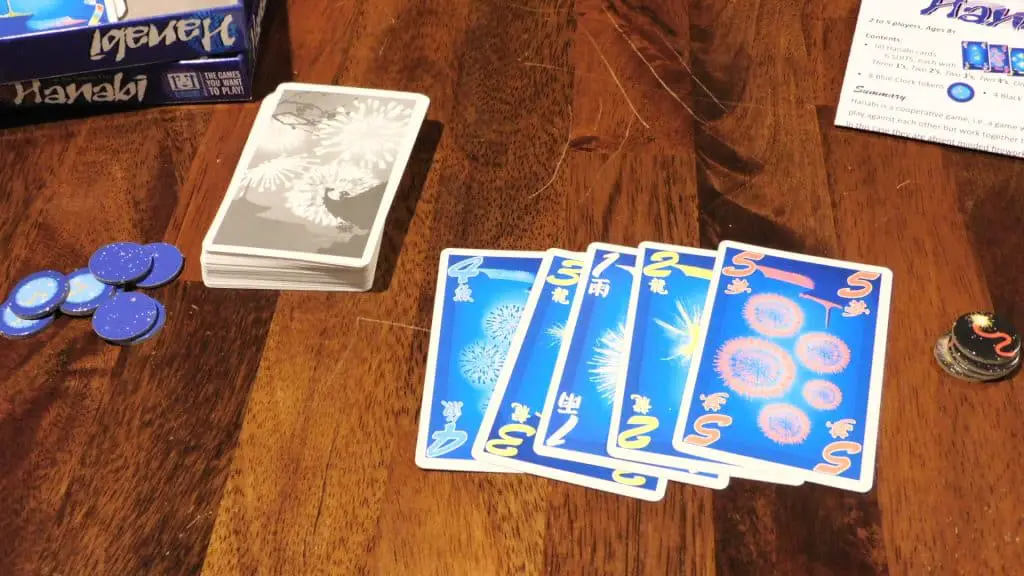
There are 60 cards in Hanabi, and there are 5 total suits, meaning there are 10 cards per suit (three ones, two twos, two threes, two fours, one five). To be honest, the game calls them suits, but they’re actually colors: red, yellow, green, white, blue, and rainbow (by the way, if you’re interested, we wrote an article on which board games relate to rainbows). The rainbow numbers are only used in the advanced game.
In a normal game, you’ll shuffle the 50 non-advanced cards together and put them facedown where everybody can reach them. you’ll also deal cards to each player: five for two to three players and four for four to five players.
In addition to the cards, there are eight clock tokens and four fuse tokens. Place the clock tokens nearby (I call them clue tokens) and stack the fuse tokens on top of each other with the token with the longest fuse on top.
What To Do On Your Turn
On a player’s turn, they can do one of three things:
- Play a card
- Discard a card
- Give someone else a clue
Play A Card
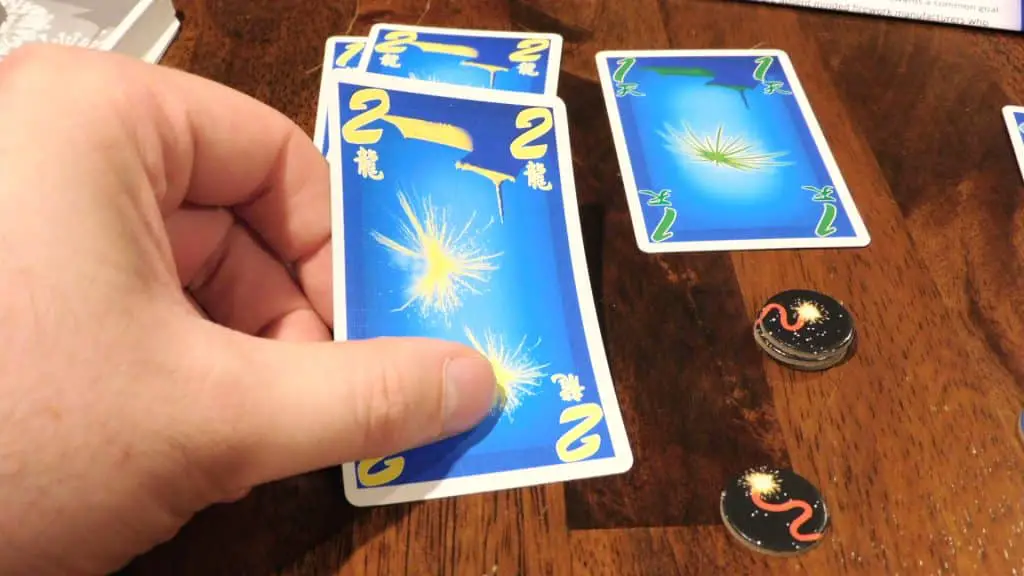
Playing a card is easy because a player picks a card from their hand (keeping in mind they can’t see any of their cards up to this point) and place it on the table. There are two outcomes from this point.
Outcome one is the player played the right card because:
- It’s a one in a color that doesn’t already have a stack started (there can only be one stack of each color)
- It’s the next number in a color for a stack that’s already been started (i.e. a blue two is showing for a stack, so if the player played a blue three, that’s a successful play)
If either of these two conditions isn’t met, the player played the wrong card and they must remove the top fuse counter from the stack of fuse tokens.
Also, if a stack is currently showing a four card and a player plays a five-card for that color, that stack is completed and the players get to return a clue token to their pile.
Discard A Card

When discarding a card, a player places a card from their hand on the discard pile, which is usually right next to the deck. When doing so, they return a used clue token to the pile for players to use in the future.
This can be a dangerous play since there are only so many cards of each number per color, but it can also be absolutely necessary to get some precious clue tokens back.
Give Another Player A Clue
If doing this, a player spends a clue token from the group’s pile, then point to another player’s card or cards. The player who spent the clue token can give information about the card or cards, but only in one of two ways, which are:
- Point to all the cards in that player’s hand of a certain color and tell them what the color is
- Point to all the cards in that player’s hand of a certain number and tell them what the number is
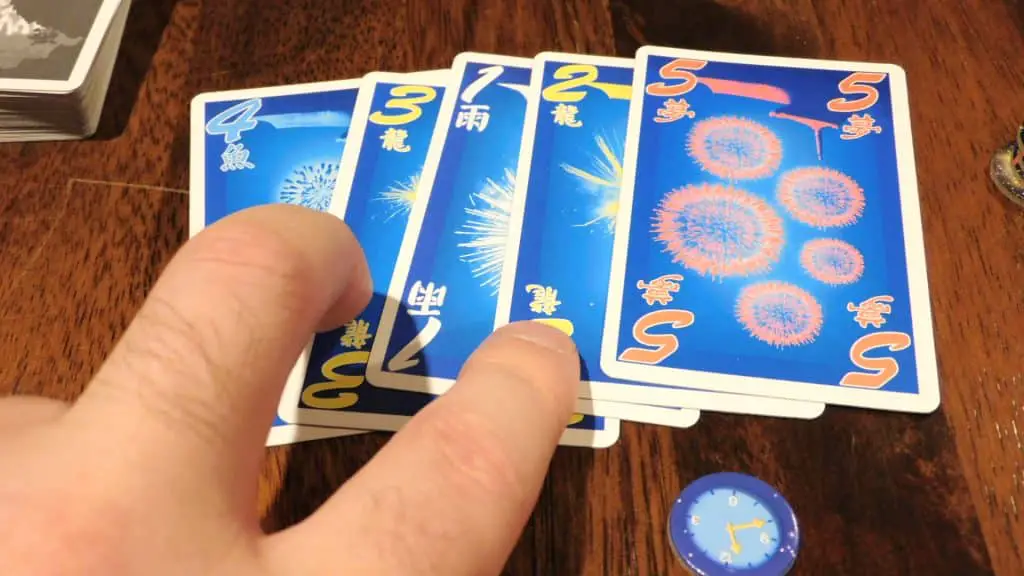
How The Game Ends
Hanabi ends if one of three things happens:
- The third fuse token is removed
- All stacks of cards are completed
- Or a player takes the last card from the deck, which allows every player one final turn, including that player
No matter what, players count up points based on how many cards they were able to play successfully. So, if they were only able to successfully play one stack of cards, that would be five points. The game is kind (and cruel) enough to provide ratings for your performance.
Here they are:
- Less than or equal to five equals horrible
- Six to 10 equals mediocre
- 11 to 15 equals honorable
- 16 to 20 equals excellent
- 21 to 24 equals amazing
- And 25 equals legendary
What About The Advanced Game?
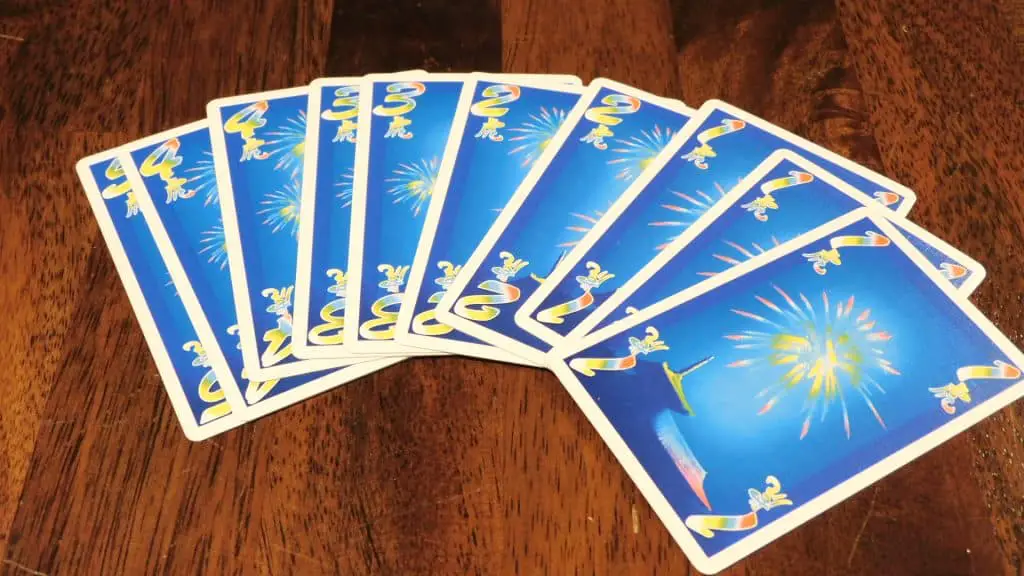
For the advanced game, all the rules stay the same, except now you’re playing with all 60 cards and must complete six stacks of cards numbered one through five.
Any Variants?
There are! Aside from the advanced game mentioned above, there are three variants. They are as follows:
- Use all colors including the rainbow color but the rainbow color only has one of each card included.
- Add the rainbow color to the game but those cards are wild now. You can’t give clues stating, “these cards are rainbow.” Instead, when giving a clue about blue cards, you have to include the rainbow color too.
- In this variant, players keep going even after the last card is drawn from the deck. Either the players complete all stacks of cards or they fail, whether by removing the last fuse token or incorrectly playing the cards.
Did You Know?
(Each time you refresh the page you will get a new “Did You Know” fact!)
Did you know that Clue was made in 1947 and was created by Anthony Pratt during World War II? He did it to pass the time during air-raid blackouts. Air-raid blackouts were the practice of shutting everything off to make it as hard as possible for bombers to hit their targets.
Conclusion: How To Play Hanabi
Well, there it is, how to play Hanabi. I’ve been enjoying this game for a long, long time, and I hope you will too.
But now I’m curious. What part of Hanabi excites you the most? What part are you dreading the most? Let me know in the comments below!
And, as always, keep on gaming, fellow board gamers.

